“We are born unequal—all of us,” begins Stefano Boeri’s introduction to Inequalities, the 24th International Exhibition at Triennale Milano. Some, like the framers of the U.S. Constitution and Martin Luther King, Jr., would disagree, but nevertheless the wager’s powder keg charge contains the firepower to blow up our world order, which runs on exploitation. Spoiler alert: No damning indictment of our current predicament is on view. Instead, Boeri and his host of curators have supplied a sprawling set of exhibitions that take on different facets of how inequality structures our lives. Boeri focuses on geopolitics—how inequality is experienced through the organization of space—and biopolitics—how inequality resides in the bodies of humans and other species.
Inequalities benefits when visitors make comparisons between the showing and that of the Biennale Architettura 2025 in Venice. Both Boeri and Carlo Ratti, who curated the main exhibition at La Biennale di Venezia, begin from totalizing propositions and use a mix of technology and social parameters to organize architectural projects. Though Venice is a more prominent platform, this year the main exhibition’s density made it difficult to digest. (Maybe a dark, 1,000-foot-long warehouse with Plato’s cave vibes isn’t the best venue to showcase architecture?) In contrast, Triennale’s smaller showing can be appreciated in an afternoon within the light-filled, U-shaped hall designed by Giovanni Muzio set within Parco Sempione. Inequalities better grapples with the structural challenges of our time through a range of thought-provoking exhibitions set within a graphic framing by Pentagram’s Giorgia Lupi. Some highlights follow. Get thee to Milan: The show runs through November 9.
On the Ground
Cities, curated by Nina Bassoli with scaffolding-like exhibition design by (AB)NORMAL, opens strong: With Grenfell Tower. Total System Failure created by the Grenfell Next of Kin platform, viewers sit to watch a film about the 2017 Grenfell fire. Above, memorial quilts and a placard that contains faces of the fire’s victims are installed as a reminder of what tragedy can result from improper building construction, which often houses lower-income residents.
Here and beyond, Bassoli asks: “What can urban planning and architecture do to restore a balance between inhabitants, cities, and opportunities?” Architects respond. For example: A landscape of models for the depopulated Japanese island of Inujima demonstrate Kazuyo Sejima & Associates’s involvement in a long-term project to reposition the locale as a space for education; Michael Maltzan Architecture produced a video about the Los Angeles fires; and the HouseEurope! campaign presents the welcome propaganda over CMU walls to encourage an EU-wide policy measure to promote adaptive reuse.
Other entries are familiar projects by a familiar cast of (mostly European) architects showcasing how the global architecture conversation has shifted to take up concerns of urbanism and equity. Cities lands as a tightly focused tour through these major touchpoints.
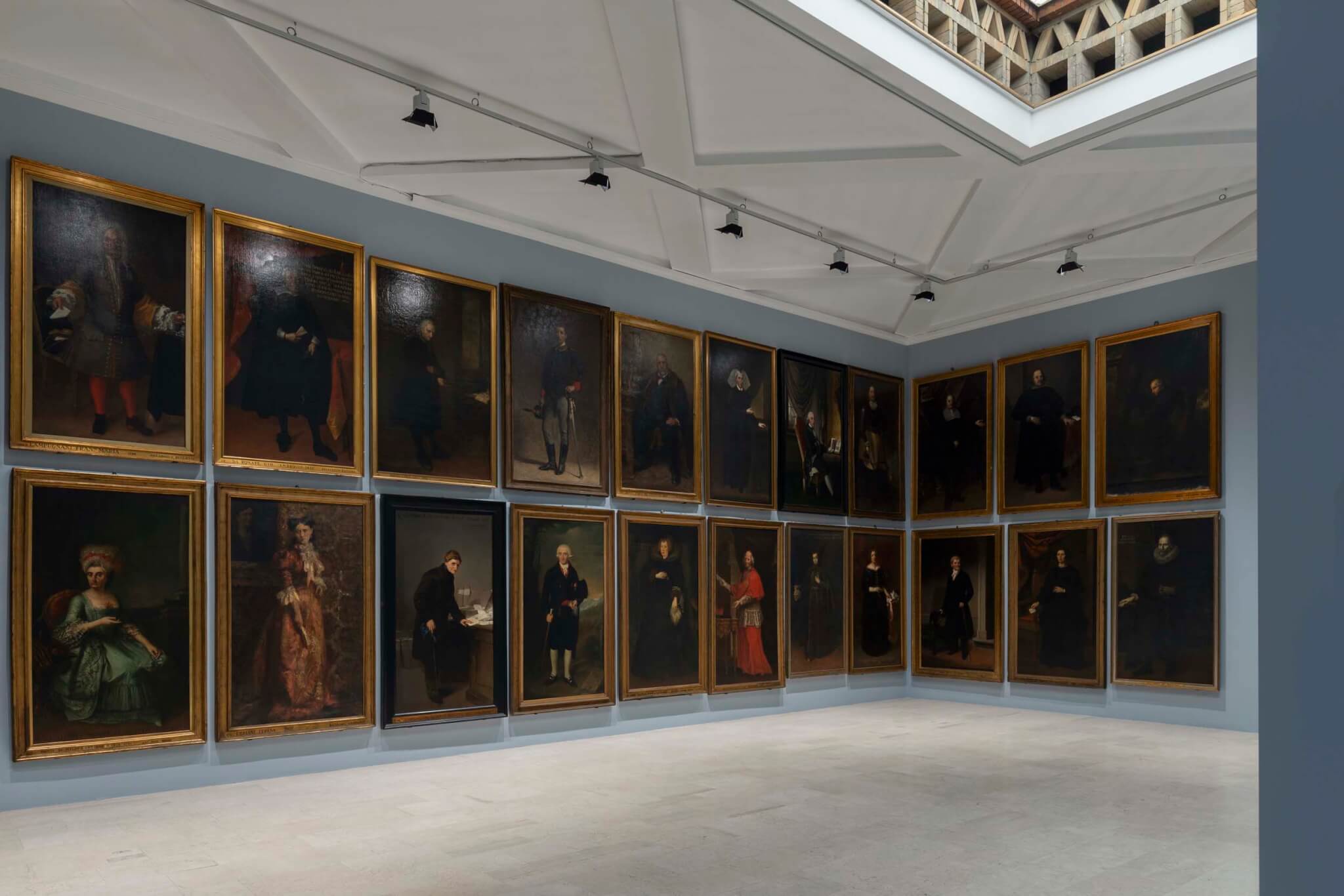
Imaging Wealth
History is told by its victors, which omits the experiences of so many people. Upstairs, an isolated room visually represents this blind spot. Portraits of Inequalities installs a room of portraits of the monied benefactors of Ca’ Granda, the city’s main hospital, founded in 1456. These large canvases, nearly all hung in gilded frames, were created over the centuries as tribute to those who kept the facility’s doors open. The array, which wraps three walls, is countered by the gaze of a peasant leaning on a shovel, painted by Giacomo Ceruti. While the donors are wearing all manner of formal dress, the worker’s clothing is tattered. The simple physical arrangement of the artworks sets up a visual conversation about the evolution of privilege over the years.
Department of Wellness
The Republic of Longevity is Inequalities’s most entertaining show. Curated by Nic Palmarini with Marco Sammicheli with exhibition design by Sopa Design Studio, the exhibition “tackles the idea that access to health care is difficult and depends on aspect that are not completely related individual behavior,” as Palmarini, a researcher with a background in political science, explained to me during a tour. It proposes five “ministries”—Purpose, Sleep Equality, Food Democracy, Physical Freedom, and Togetherness—to demonstrate how daily acts can lead to better quality of life. Each ministry is installed within a circular display that collects thematically related design objects. The inventive and fun groupings are enhanced by the pageantry of flag-like banners suspended above.
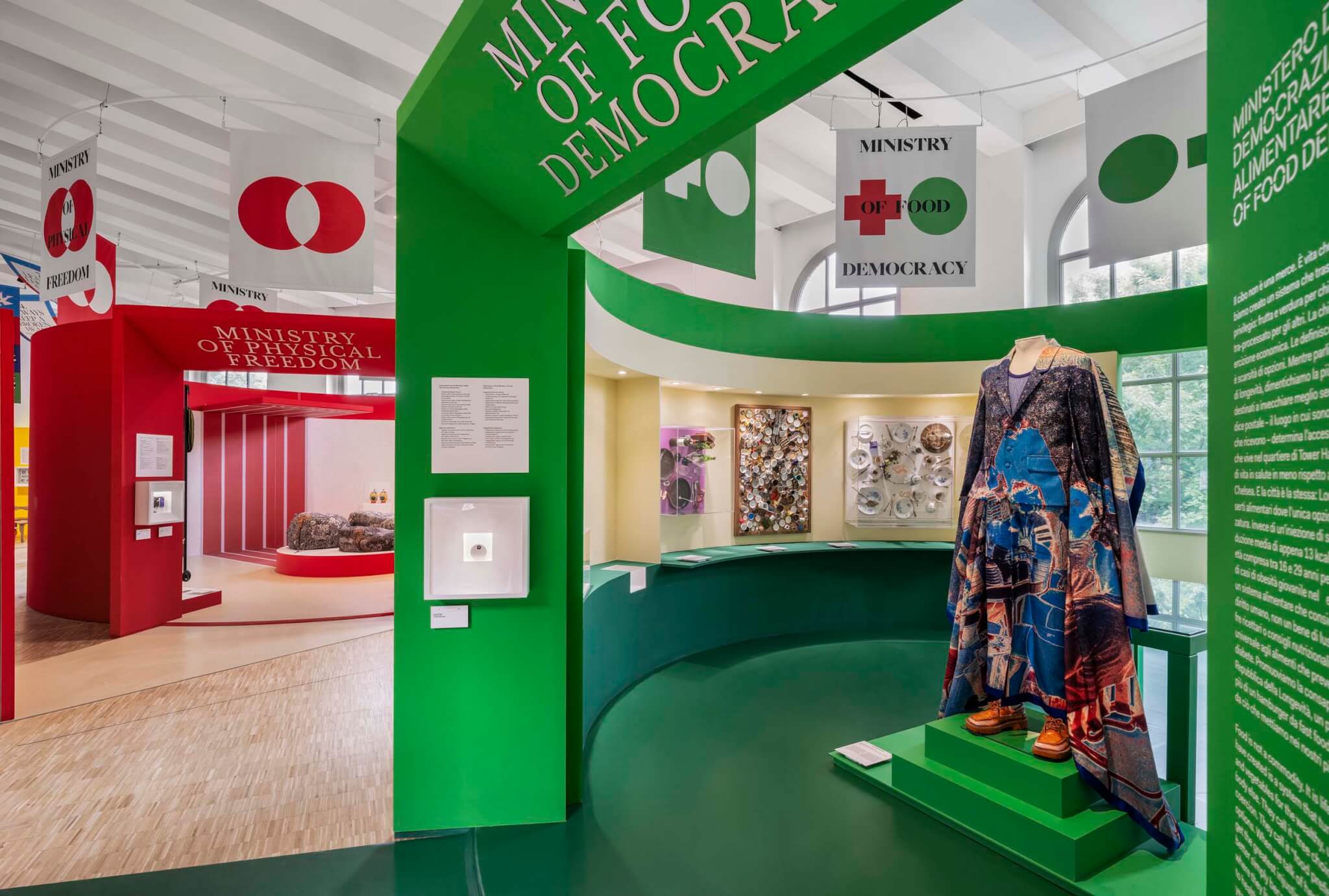
The best imagined department is the last one, Togetherness, as it abandons the enclosure and instead hosts a motley assortment of wooden chairs by Martin Gamper. It is accompanied by Holzer-like slogans on banners: “Do things you will regret.” “Never settle for happiness.” “Embrace your enemies. “Always keep a broken heart.” And on. (I liked number 9: “Never become adult (while mastering the art of growing older.”) The provocations were written by Palmarini, who described our epidemic of loneliness as a big problem; social connection is “one of the most powerful drugs we have for longevity,” he said. The final item is a game called Remember to Choose. One sits and answers questions, then a receipt-like print out furnishes customized suggestions, a personalized formula for longevity.
In His Archival Era
Triennale includes a permanent installation of a rebuilt room from Casa Lana by Ettore Sottsass. Theaster Gates has wrapped its blank outer walls with the archive of late Japanese potter Yoshihiro Koide. Gates studied ceramics in Japan and decades later “became the steward” of Koide’s work, which numbers over 60,000 pieces. Encountering it at this scale with the everydayness of a studio shelf instead of the preciousness of a typical museum treatment is refreshing. (Gates’s interest in archival assembly is also on view in Unto Thee at Chicago’s Smart Museum of Art through next February.) What does Clay Corpus have to do with inequality? Not a lot, other than Gates’s hoarding rescues a collection that might have otherwise been lost.
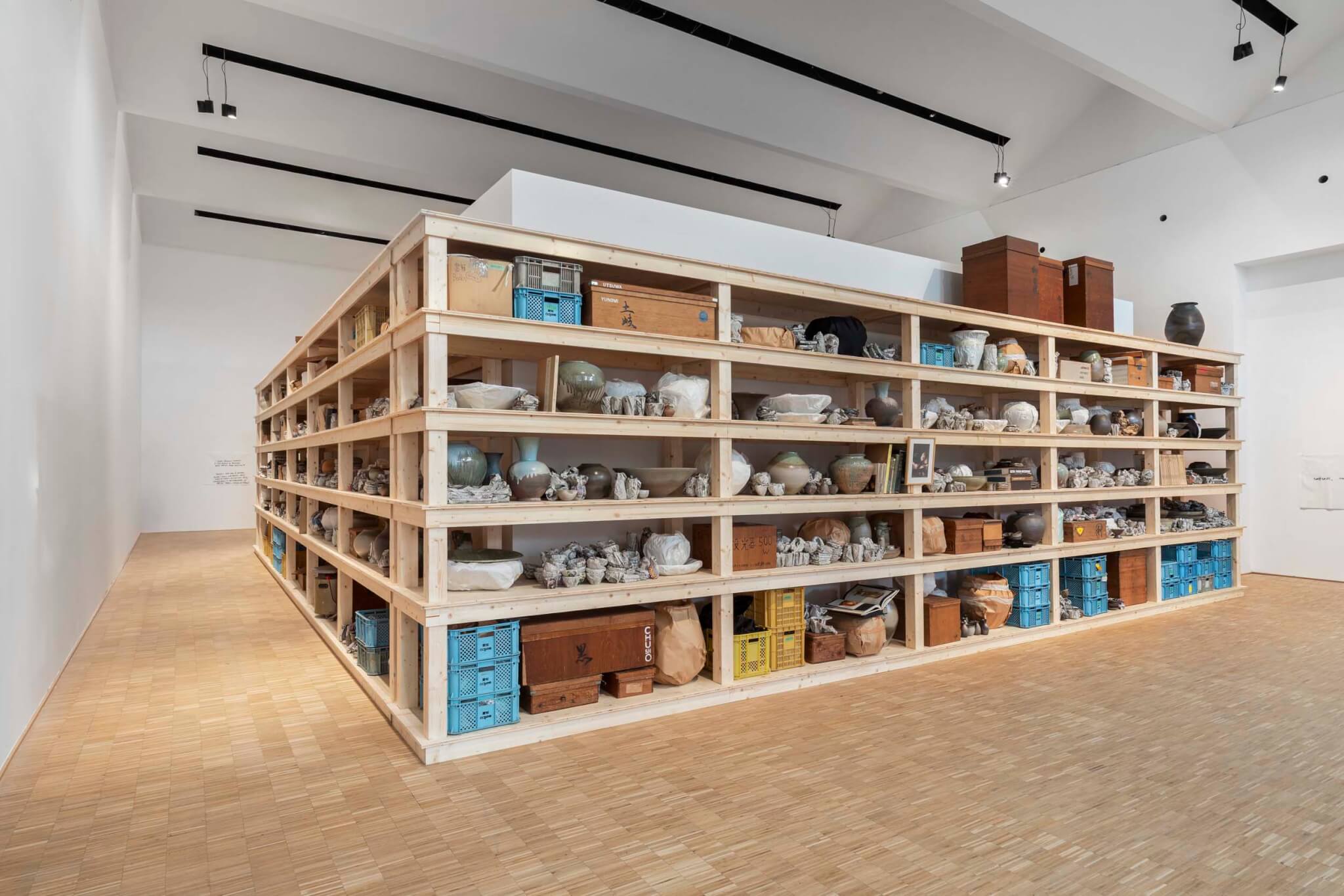
An Atrium of Death
The violence in Gaza, Israel, and surrounding countries in the Middle East goes under-discussed in the architecture and design media. Here, Boeri has given Triennale’s staircase over to 471 Days, a powerful visualization of the official deaths recorded between Hamas’s attack on October 7, 2023, and the temporary ceasefire on January 19, 2025. Across that time, “approximately 48,500 people are estimated to have died, including over 46,900 Palestinians and 1,600 Israelis,” according to the exhibition’s press materials, released in May. Since last January, Israel’s campaign in Gaza has continued. Recent reporting states that Israel’s offensive has killed more than 67,000 Palestinians, according to NPR, including an estimated 20,000 children, according to CBS News.
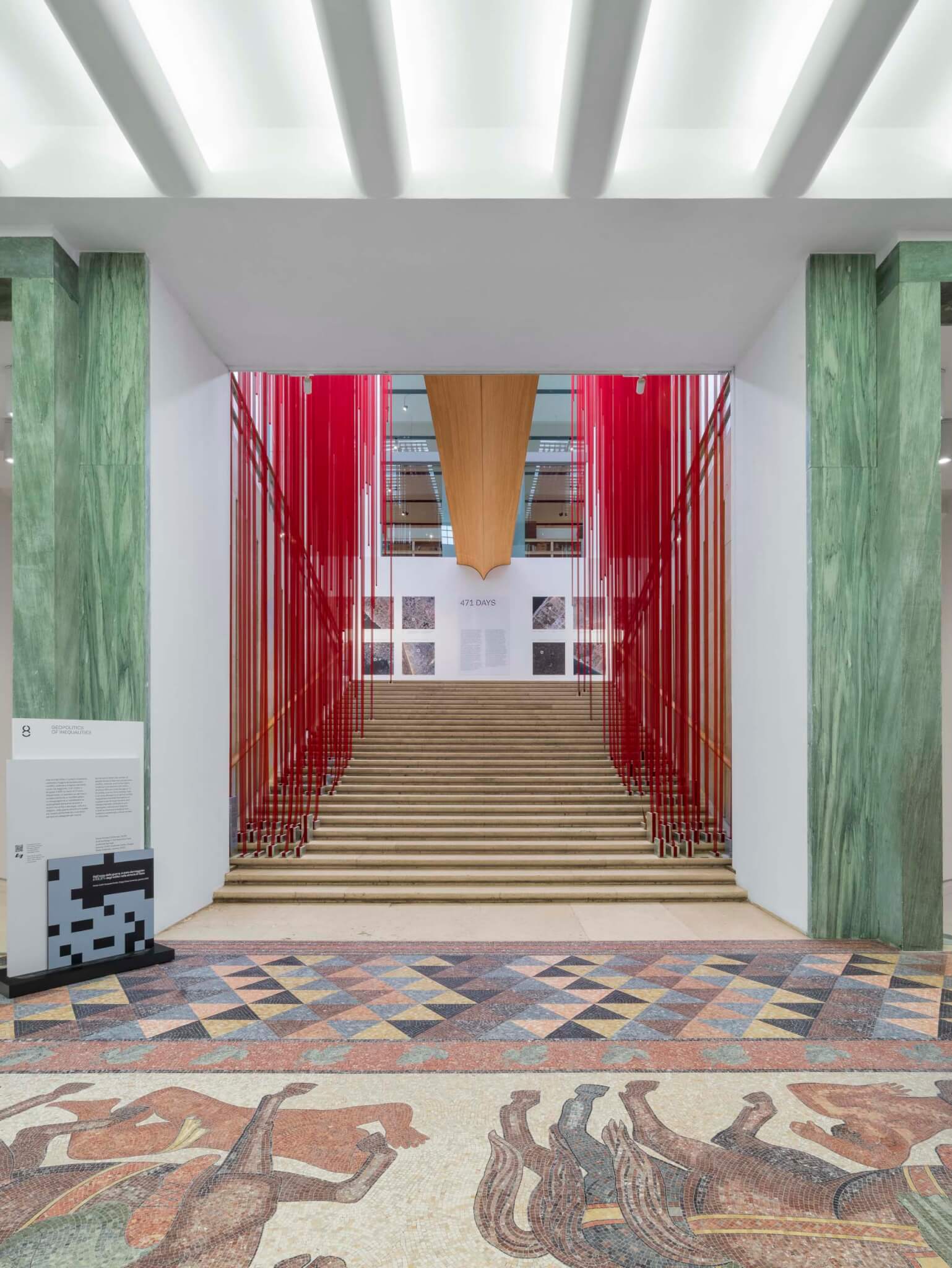
Filippo Teoldi, with installation and exhibition design by Midori Hasuike, treats the statistics of 471 Days in a neutral way through vertical columns of red fabric whose length correspond to the number of reported deaths per day. The visual color field embodies the blood loss in an abstracted way, without commentary. Supplemental images hung on the stair’s landing study the urbicide through before and after satellite images.
Boeri told me that “institutions cannot stay in silence on this issue,” and added that it is important “to show that we can act as a public platform for discussion and dialogue.” He also said there were meetings with both the Jewish and Palestinian communities in Milan and hoped that Triennale could host future gatherings.
Visualizing Injustice
Similar to 471 Days but taking a different formal expression, Shapes of Inequalities uses a calligraphic, leafy visual style to give form to various statistics about how unjust the world is. I imagine Edward Tufte would appreciate Federica Fragapane’s treatment, realized with installation and exhibition design by Midori Hasuike and editing by Veronica Vannini, which delivers beautiful linework about grim statistics like how 2020 was the first year that human-made stuff (“anthropomass”) surpassed the Earth’s biomass or how the top 10 percent of the world creates nearly all global emissions while the bottom 50 percent will lose income due to climate change.
Micro-Pavilions
Triennale’s offering includes 18 participations from nations and entities, including the North Pole, Puerto Rico, and the Roma and Sinti nation.
Saudi Arabia’s first contribution to Triennale is Maghras, A Farm for Experimentation, curated by Sara Al Omran and Lulu Almana. Its large room was filled with materials for Maghras, a farm and interdisciplinary community space in Al Ahsa, east of Riyadh. The wider effort seeks to preserve agricultural and craft traditions while reimagining a farm as a new type of public space. The centerpiece of the show is an internal maghra—a space created by a square of four palm trees, represented here in reflective silver metal—where discussion can take place. The research is a welcome complement to the other intensive development projects, like NEOM, underway in the country.
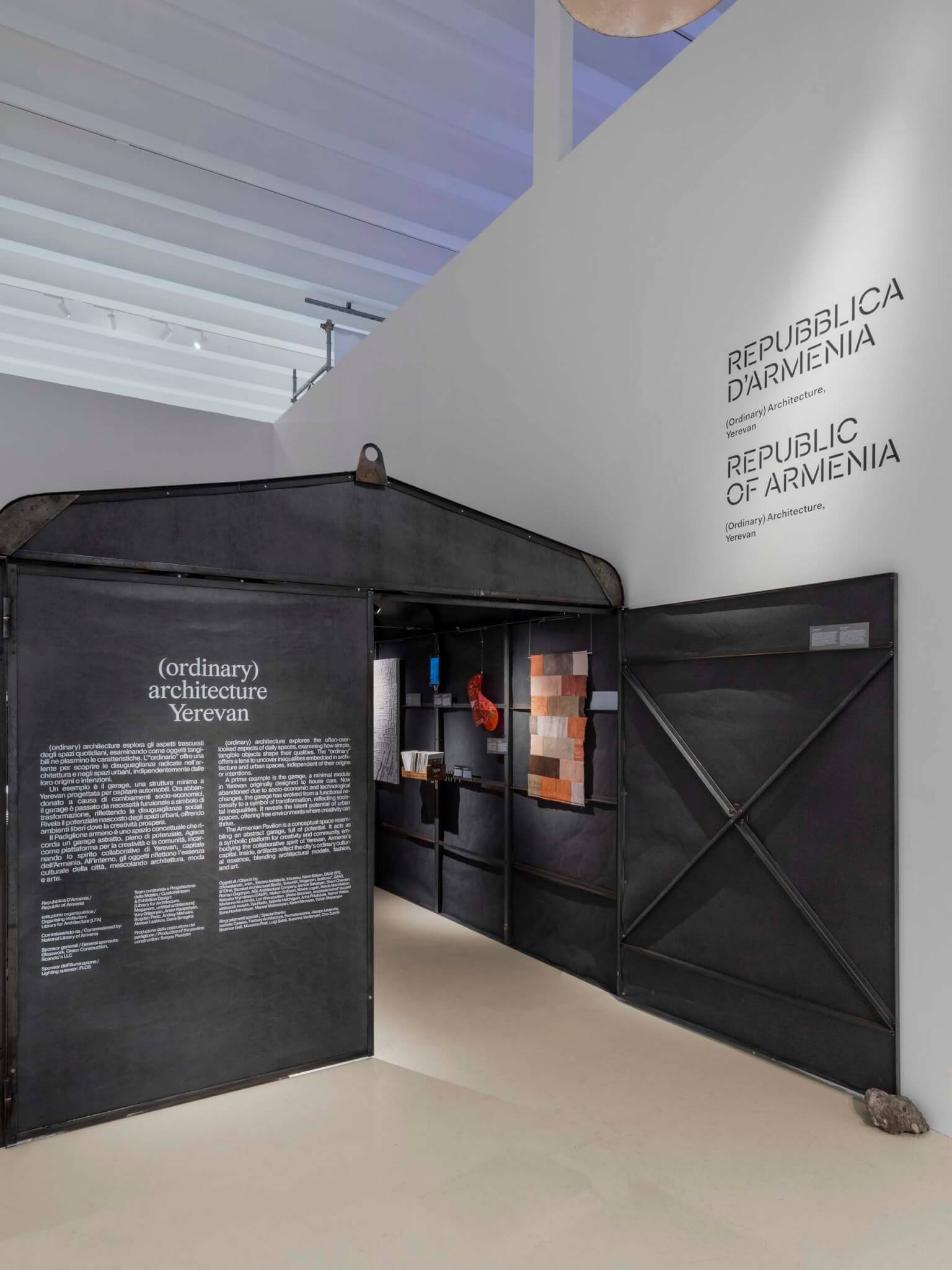
Armenia’s (ordinary) architecture, promoted by Yerevan’s Library for Architecture and curated by Arsen Karapetyan, Yury Grigoryan, Bogdan Peric, Andrey Mikhalev, Aleksei Lashkov, and Dana Smagina, the installation reproduces a humble car shed filled by objects sourced from an open call for Armenian creatives to contribute their ideas and sketches about everyday designs.
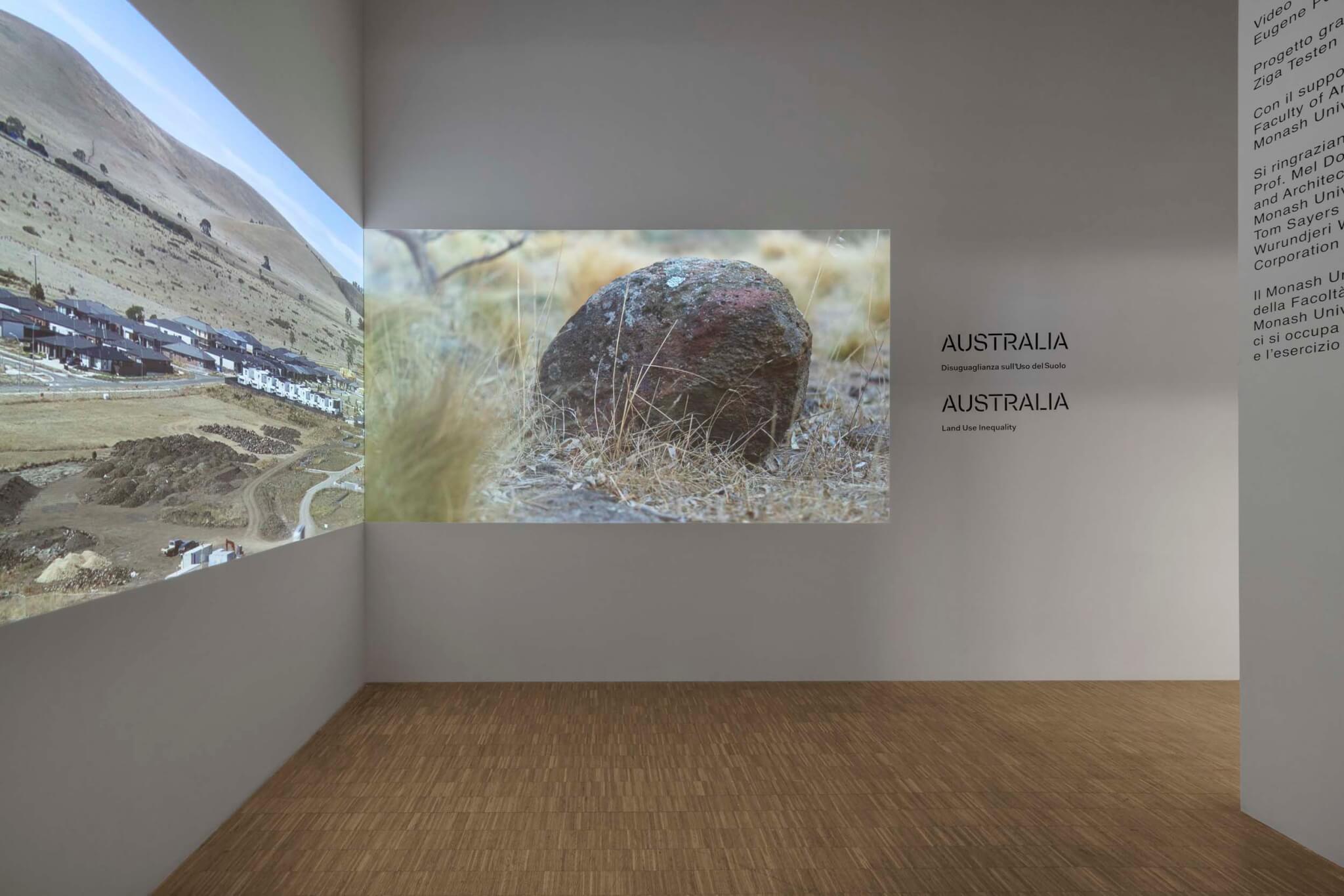
For Australia, Land Use Inequality uses video to study the outer expanses of Melbourne, namely the collision between its low-density sprawl and the grasslands beyond. Baracco+Wright Architects designed the exhibition, which saw video monitors and projects installed in corners to form spreads of paired feeds, in addition to curating the show with Monash Urban Lab at Monash University.
A Brief Vacation, the Polish offering that was part inspired by the Italian movie of the same name, created a respite for relaxation. Curated by Katarzyna Roj with the architect Aleksandra Wasilkowska, the focal point of the showcase is an oversize sleigh where one can recline and take in the speculative architecture proposal for Transsanatorium, an underground wellness facility that proposes “repurposing urban waste—heat, soil, greywater—into resources for renewal, pleasure, and health.”
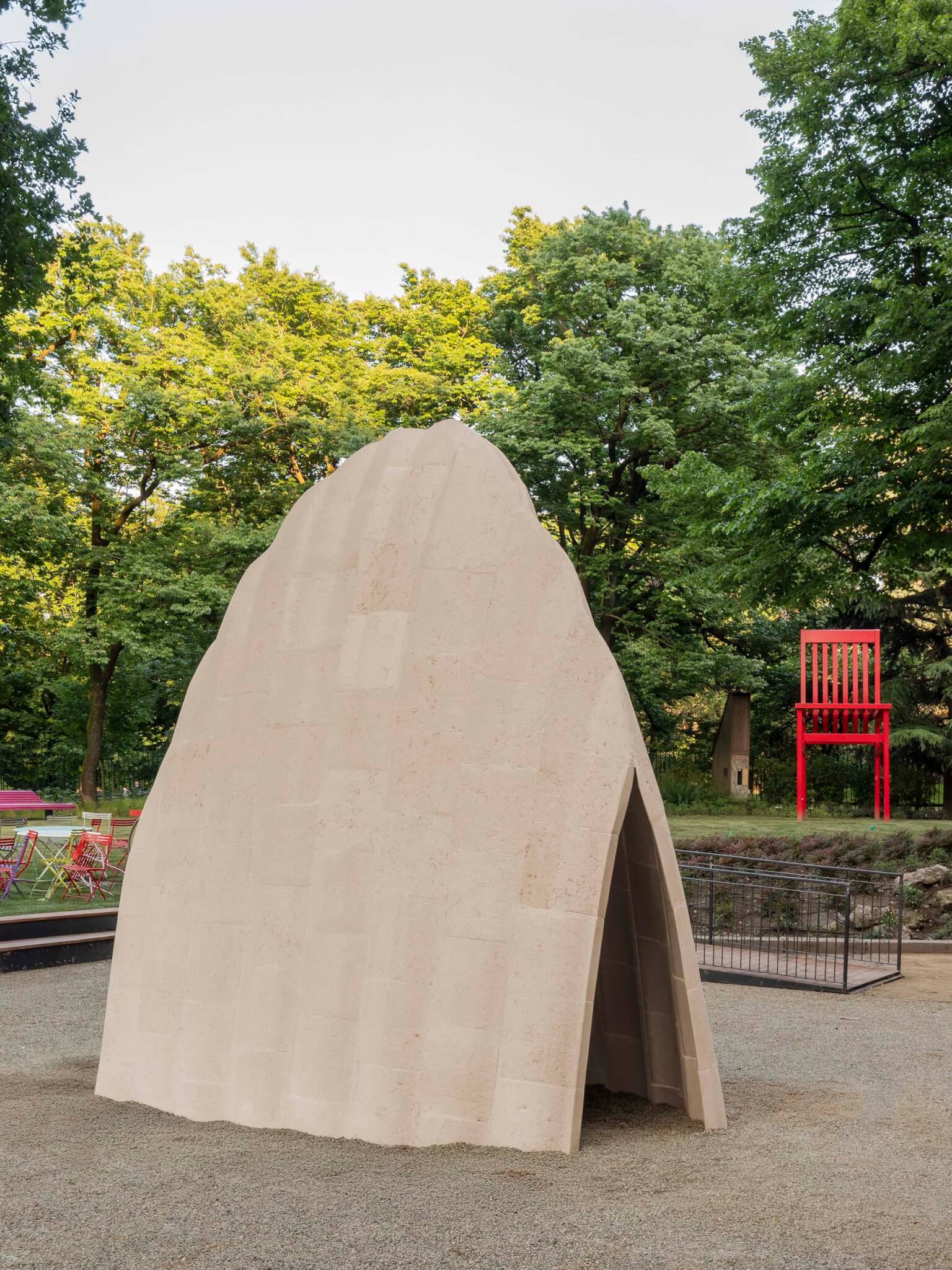
Outside, Qatar is represented by Tiamat, the stone pavilion first created by AAU ANASTAS for the inaugural Design Doha biennial in 2024.
Cash for Clunkers?
Given Boeri’s loose-fit approach, the thematic relevance wavers in some of the exhibitions. A Journey Into Biodiversity: Eight Forays on Planet Earth was inventive but seemed to have little to do with the overall intent, though its hand-operable mechanical toucans are entertaining. A number of Milan-focused research projects explored the city’s urban fabric, but their nuances were lost on this out-of-town viewer. And Towards a More Equal Future, a show of the global work of the Norman Foster Foundation is cheapened by bad graphic design, though its typographic sin is outweighed by the presence outside of a 1:1 version of Foster’s Industrialised Construction System currently under development in Portugal.
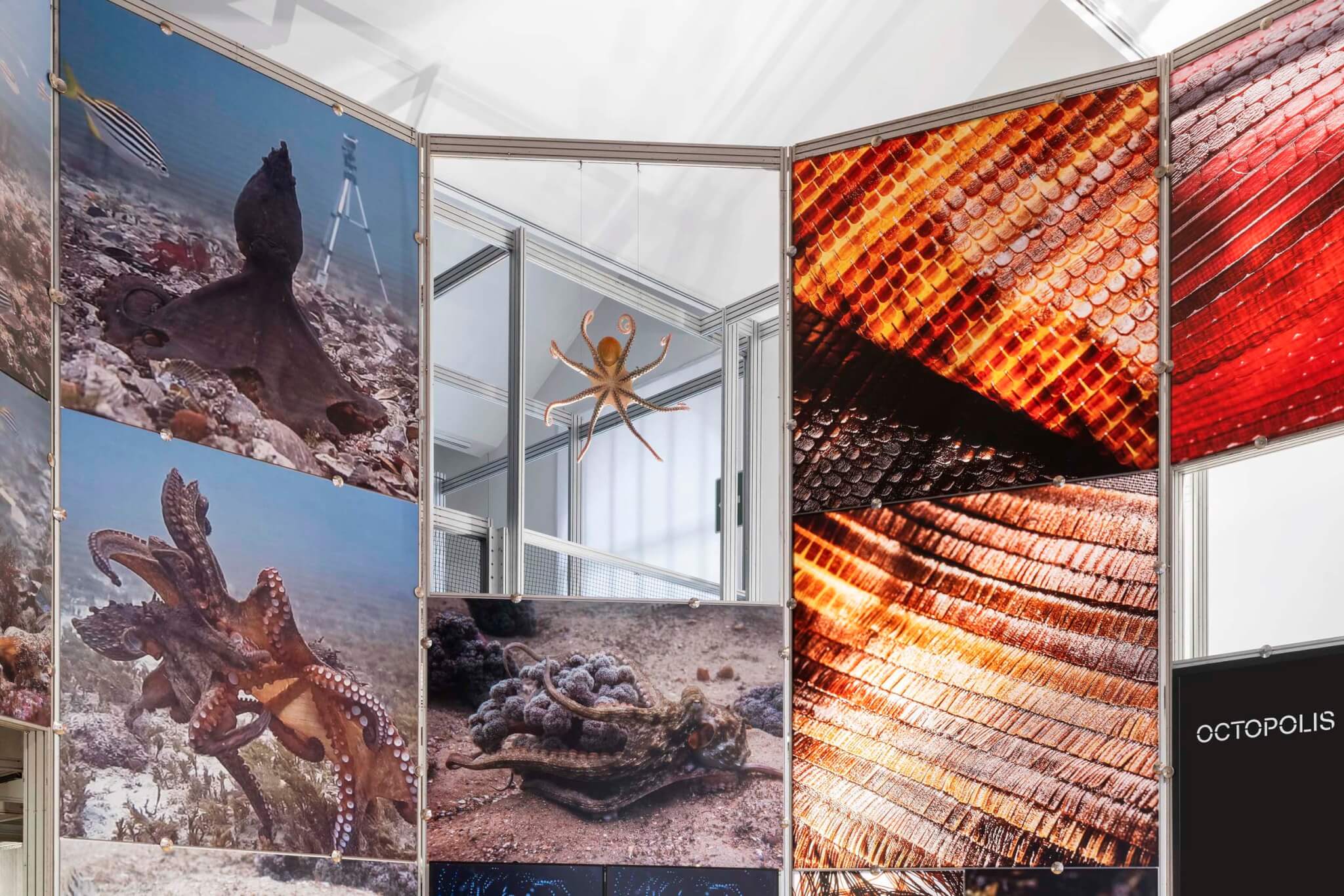
Upstairs, Beatriz Colomina and Mark Wigley delivered We the Bacteria: Notes Toward Biotic Architecture, which builds on their in-depth research about health and design. The inventive show included a timeline of 10,000 years of architectural precedent as seen from the perspective of bacteria, in addition to a display of cleaning products and new collaborations between contemporary designers and microbiologists. The research focused more on health and biodiversity than on the sociopolitical lens of the wider Triennale.
Still, the jury of MoMA’s Paola Antonelli, journalist and author Ifeoluwa Adedeji, and Salone del Mobile president Maria Porro gave the Award for Best Original Project to Two Sides of the Same Coin by Laura Kurgan, Dan Miller, and Adam Vosburgh, a large disc that “illustrates the evolution of human microbiome over 12,000 years.” (The Mention for Original Project was awarded to Grenfell. Total System Failure from within the “Cities” exhibition.)
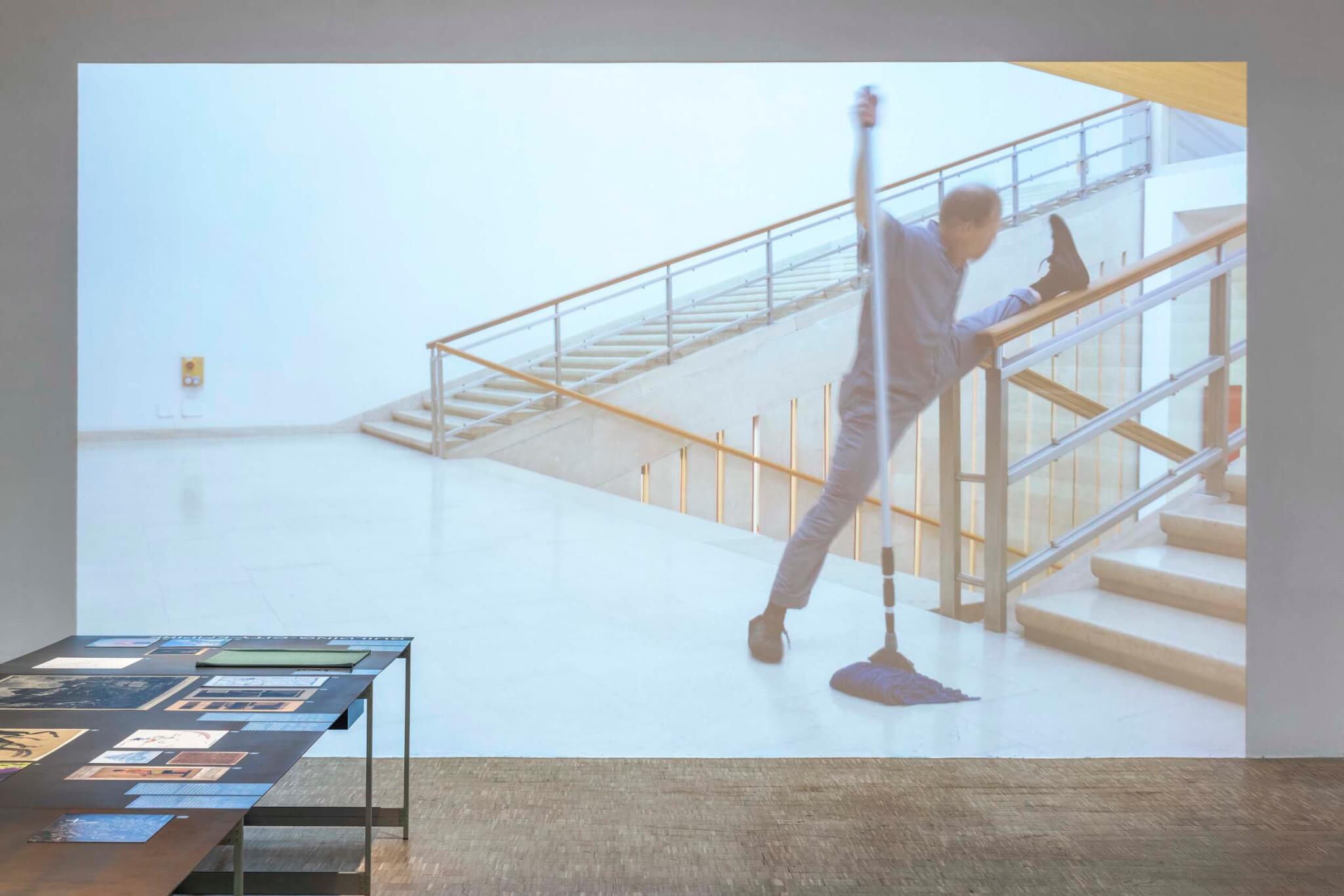
A standout piece from We The Bacteria is the newly commissioned The Corner Problem, a film by Diller Scofidio + Renfro in collaboration with Frank Willens directed by Elizabeth Diller. In it, Willens artistically mops the stairs of the Triennale, a task that evokes the modernist drives to eliminate dusty ornament (which results in the 90-degree corner, where bacteria can hide), create a healthy environment free of pathogens, and suppress the bodily task of building maintenance. Here, the obsession is both venerated and critiqued through performance.
A Better World
Across some of its components, Inequalities points to the structural deficiencies that afflict all of us. But rather than woe, Boeri’s some 28 curators respond with invention, finding new ways to visualize our world, celebrate its diversity, and build better structures of care. I came back to the efforts that were more aspirational in approach. We are drowning in data; it hasn’t made the slightest difference in avoiding humanity’s disasters. What we need is to renovate our collective desires and shared values. It’s like the wisdom dispensed on one of the ministry’s tapestries: “Yearning for beauty takes you far and grants you longevity.”
→ Continue reading at The Architect's Newspaper
